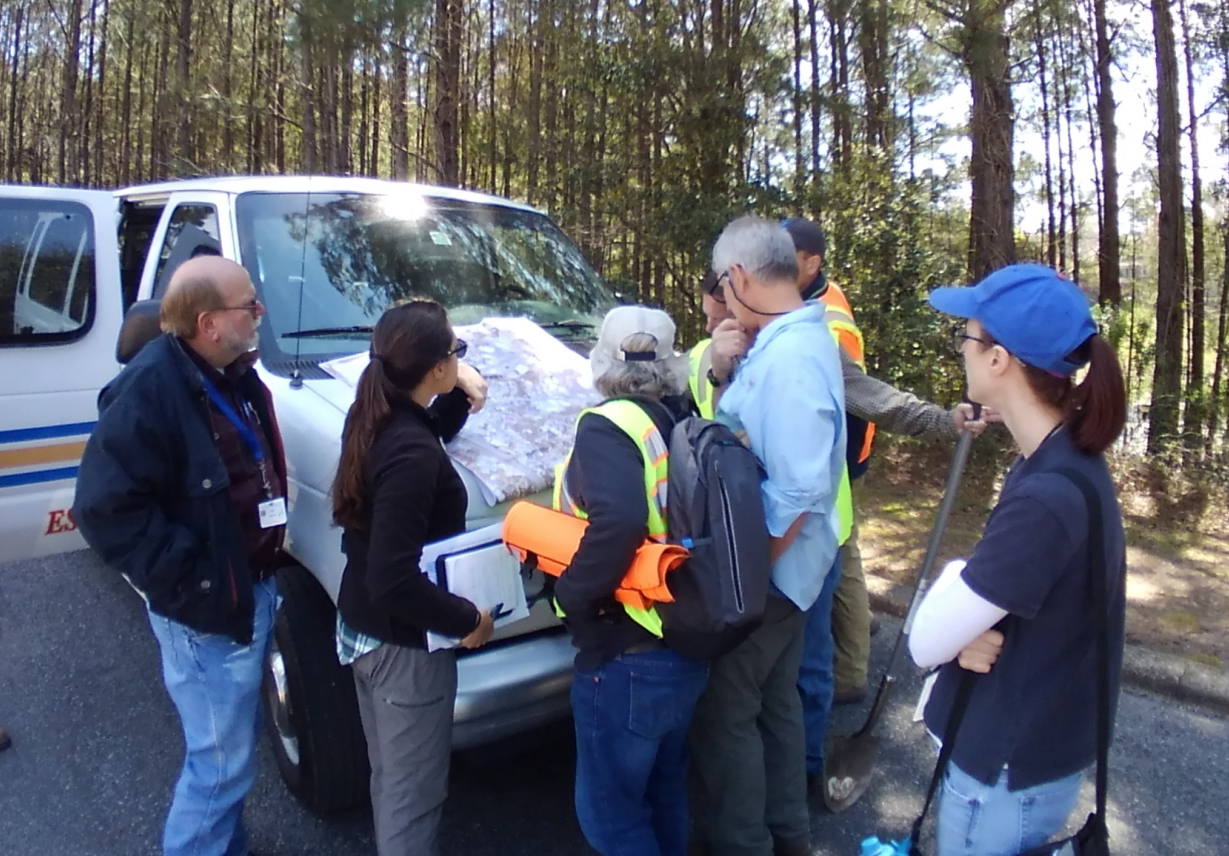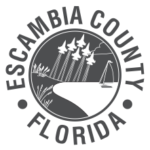
The Carpenter Creek watershed is approximately 6,760 acres or 10.5 square miles. The headwaters of the creek are located in south-central Escambia County, north of Interstate 10 and west of Interstate 110. The creek generally flows southeast under Olive Road, I-10, Burgess Road, I-110, Davis Highway, Airport Boulevard, Brent Lane, Ninth Avenue, and 12th Avenue before entering Bayou Texar. Carpenter Creek is the only significant freshwater tributary of Bayou Texar. The Bayou Texar watershed includes approximately 5,266 acres or 8.2 square miles of additional drainage area not already included within the Carpenter Creek watershed. Watersheds are identified by the State of Florida by waterbody identification numbers, or WBIDs. Carpenter Creek is WBID #676; Bayou Texar is WBID #738.
Both Carpenter Creek and Bayou Texar have been verified by the Florida Department of Environmental Protection as impaired for fecal coliform bacteria. In 2012, FDEP adopted a fecal coliform Total Maximum Daily Load for both water bodies. Bacteria reductions are necessary for these water bodies to meet surface water quality standards. TMDLs require a fecal coliform reduction of 28 percent and 49 percent for the creek and bayou, respectively.
Escambia County and its co-permittees, Florida Department of Transportation, City of Pensacola, and Town of Century, have a National Pollution Discharge Elimination System permit authorizing the discharge of stormwater from the municipal separate storm sewer system to waters of the state. As a condition of this permit, the co-permittees are required to address one TMDL without an approved Basin Management Action Plan per five-year permit cycle. The Carpenter Creek fecal coliform TMDL was identified by the co-permittees as the top priority for the current permit cycle. The Bayou Texar fecal coliform TMDL was ranked second.
A Bacteria Pollution Control Plan has been implemented for Carpenter Creek to achieve the fecal coliform load reductions required by the TMDL. It is anticipated that the BPCP will accomplish the following goals:
Escherichia coli, or E. coli, bacteria and a number of field parameters are sampled at five locations in the Carpenter Creek watershed every month. Monitoring began in January of 2016 and is ongoing. The first annual status report includes the 2016 data collected under the Carpenter Creek BPCP. The 2016 data confirms that Carpenter Creek is indeed impaired as a Class III freshwater waterbody for the bacteriological criteria of E. coli. The criterion states that samples are not to exceed 410 MPN/100mL E. coli for more than 10 percent of the samples within a reporting period. As a whole, the 2016 data set exceeded this 10 percent threshold value, or TPTV, 43 percent of the time. The geometric mean for 2016 E. coli data was 368 MPN/100 mL.


Escambia County Natural Resources Management Department recently hosted a “Walk the Watershed” event for Carpenter Creek. This cooperative event was the next step toward full implementation of the Carpenter Creek Bacteria Pollution Control Plan adopted in 2015 to address the fecal coliform bacteria surface water quality impairment. The purpose of the event was to find and eliminate potential sources of fecal bacteria. Field work during the event focused on water quality issues identified during the “Maps on the Table” meeting hosted by Escambia County last August. Participants included Escambia County, City of Pensacola, Florida Department of Transportation, Florida Department of Environmental Protection, Florida Department of Health, Emerald Coast Utilities Authority, Bream Fisherman Association, Emerald Coast Keeper, and the University of Florida. Escambia County will now be working with stakeholders to address items identified during the “Walk the Watershed” event that require further evaluation and/or corrective action. Photographs from the event have been uploaded to the image gallery below.
A planning meeting was held on Aug. 30, 2017 by Escambia County on behalf of its co-permittees. The purpose of the meeting was to document known problems and other areas of concern related to the existing Carpenter Creek Total Maximum Daily Load for fecal bacteria. Escambia County is still asking anyone with similar information who was unable to attend the meeting to fill out the questionnaire above. Information received will be used to support ongoing efforts to find and resolve problems contributing to elevated fecal bacteria levels in the creek.
MOT Meeting AgendaA stakeholder meeting was hosted on March 29, 2017 by Escambia County on behalf of its co-permittees. Local stakeholders representing more than 20 groups and organizations were in attendance. Presentations from the meeting are available below.
Stakeholder Meeting Agenda
The mission of Escambia County government is to provide efficient, responsive services that enhance our quality of life, meet common needs and promote a safe and healthy community.
Under Florida law, IP addresses and both the content of emails and email addresses are public records. If you do not want your IP address and the content of your email or your email address released in response to a public records request, do not send electronic mail to this entity. Instead, contact this office by phone or in person.

